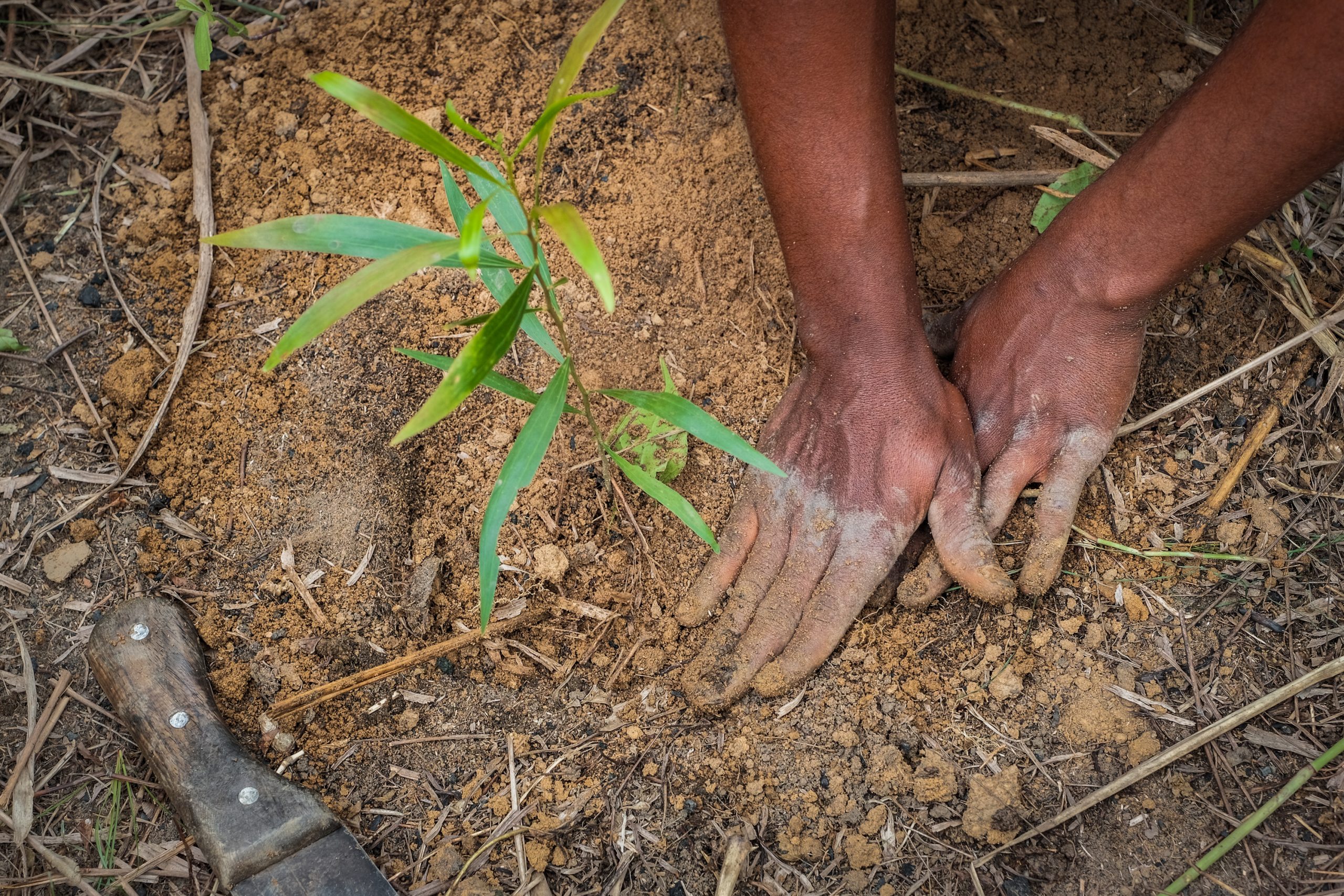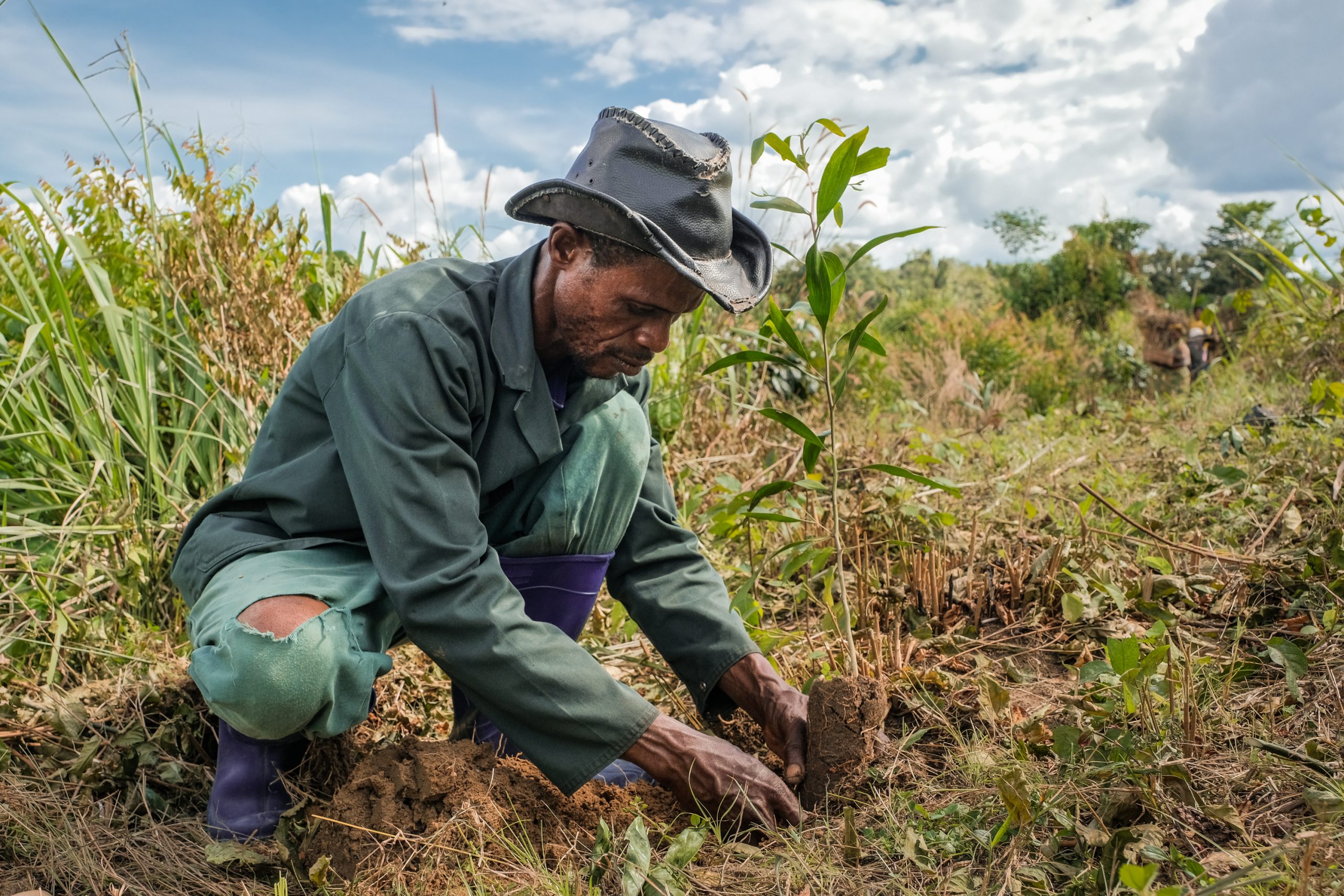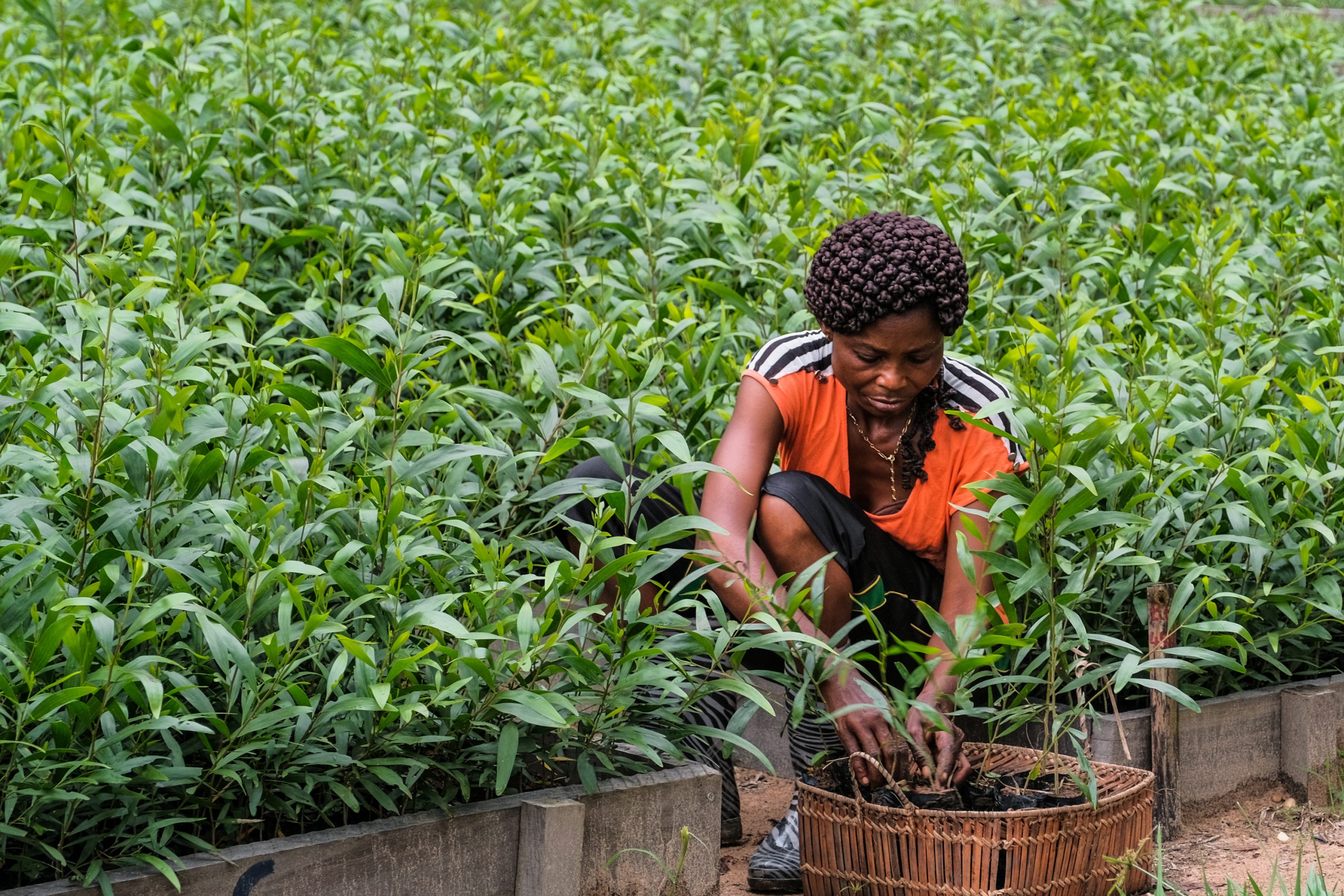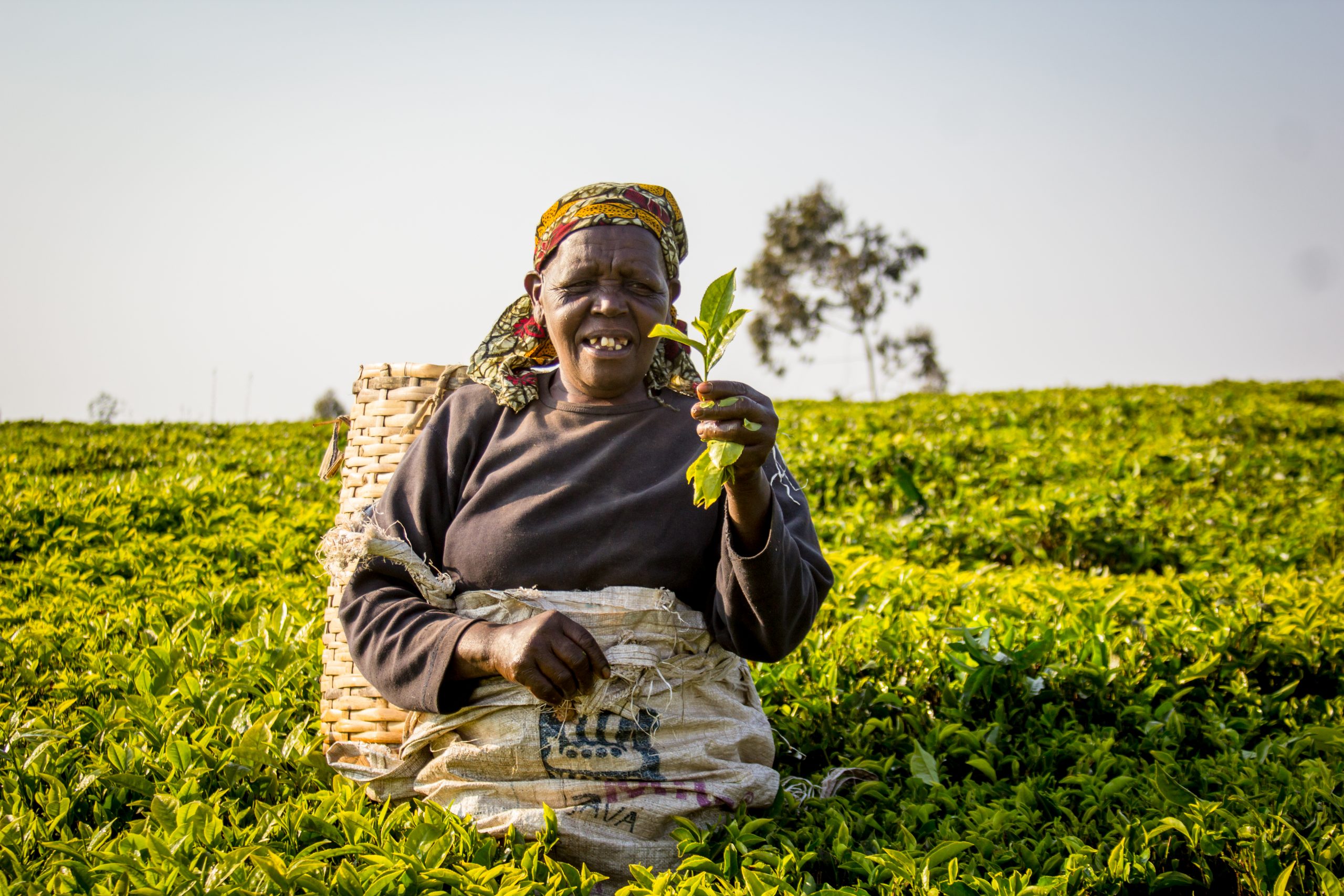Duration of engagment
Medium-Long (2 years for baseline assessment and planning; 5 years to achieve self-sustaining alternative livelihoods)
Cost
($)
Staff time to liaise with jurisdictional governments and communities
($)
Costs associated with workshops and meetings
($)
Training on developing new products, entrepreneurship, and attracting investment (e.g. business and investment plans)
($$)
Participatory socio-economic studies to identify gaps, needs, and opportunities
($$)
Processes to implement FPIC, when needed
In the real world
While companies have long helped farmers and communities to diversify livelihoods, few have done so as part of landscape/jurisdictional strategies. The following cases include some in which companies have taken important action in the absence of agreed or clearly articulated L/JI goals and priorities. If undertaken in the context of an L/JI, the same actions can leverage partners’ efforts and help to deliver significantly greater impacts.
West Africans cook food without consuming forests
Nestlé has distributed over 800 efficient cookstoves in Côte d’Ivoire and Ghana to reduce pressure on forests and improve family health. The company has also helped establish village savings and loan associations for over 9,400 people to finance their small business opportunities.
Preventing future unemployment-driven deforestation
Golden Agri-Resources (GAR) offers livelihood packages to the communities that supply its labour force. The company recognizes that automation trends in palm oil production will displace labour and erode jobs over time, at which point underemployed workers may take up unsustainable practices to make up lost income. To anticipate and mitigate this risk, the company livelihood package includes training, support with agricultural inputs, and market access for activities like yield improvement on rubber plantations, organic farming, and aquaculture. GAR also manages an outgrower scheme, in which smallholder cooperatives gain dedicated training to convert non forested community land into productive plantations.
Boosting productivity, shrinking farmland footprints
Hershey’s has invested in increasing the economic resilience of cocoa farmers by supporting over 14,000 farmers in sustainable livelihood and income diversification programs. These programs provide training on cassava and plantain production and other income generating activities, which may help farmers earn enough that they need not expand their farm footprints. It has also helped to establish almost 200 Village Saving and Loan Associations, totaling over 5,000 farmers, to educate communities on responsible saving, borrowing, and investment. These Associations have provided over US$ 250,000 in loans to support education and micro businesses.
Earning income without jeopardizing Ghana’s forests
In 2018, Benso Oil Palm Plantation (BOPP) partnered with communities in Ghana’s Adum Banso traditional area, Proforest, and Partnership for Forests to address challenges faced by smallholder palm oil producers. This initiative trained farmers on social and environmental best practices for growing palm oil and worked with local NGOs to develop alternative livelihood schemes to prevent further clearance of forest frontiers. Over time, stakeholders formed local Forest Landscape Governance Board Committees to oversee efforts to protect forests and reduce social impacts in the area.
Key points for companies

Determine whether the target landscape/jurisdiction has set a goal to promote additional or alternative livelihoods to those that drive forest loss or environmental degradation. If so, companies should align their efforts with the L/JI’s goals and geographic priorities. Alignment could mean redirecting and/or expanding current livelihoods support or investing in programs delivered by others. Upstream companies with robust community outreach capacities can take the lead in training for alterative livelihoods, backed by funding and incentives from downstream companies.

Companies can support additional/alternative livelihoods if they:
- Identify value-addition opportunities within the supply chain
- Support crop diversification through land assessment, farmer extension services, and long-term commodity purchasing programs
- Promote other viable business opportunities that generate non-farm employment in target communities (e.g. clean energy, clean water, education)
- Help farmers develop financial literacy, management, and entrepreneurship skills
- Invest seed capital into micro-finance for small and medium enterprise development (directly and with local, national, and international co-investors)

There are various strategies to unlock additional or alternative livelihoods:
- Support stakeholder mapping and analysis to identify who needs what outcomes, and why. Collaborate with an organization that has a track record supporting community economic development. Then help stakeholders establish governance structures, appropriate smallholder schemes, livelihood models, and mechanisms for monitoring and evaluation.
- Identify alternative livelihood opportunities in the company’s operations and supply chains that are consistent with the strategies of the L/JI. For example, companies could promote alternative crops in suitable locations, invest in shared processing plants, and expand economic opportunity to women.
- Open new alternative livelihood opportunities by contributing business planning expertise, funding the provision of relevant expertise, and encouraging and supporting the participation of relevant suppliers. Specific arenas for support include:
- Business models: conduct market research on service industries and sustainable forest-based, agricultural, or non-natural resource products; product development; market testing; business plan development; legal entity establishment
- Human resources: assess capacities and bridge gaps for village planning groups, community-based entrepreneurs, innovation hub managers, business expert rosters, and government economic development agencies and programs
- Institutional and policy dynamics: assess how best to integrate new products and services into local and regional economic development plans and programs, as well as changes needed to regulatory frameworks to enable and incentivize community-based enterprises and regional industries
- Investor communication and outreach: identify potential investors and engage them through a well-developed communications and marketing effort; present a compelling business opportunity, facilitate due diligence, and broker relationships
- Train and build the capacity of local communities to establish and run small businesses. Communities often need help promoting a savings culture to boost their financial management skills and credit worthiness. Companies should align support with the L/JI’s objectives, with an eye to helping today’s new businesses become future sustainable supply chain partners.
- Promote regular progress reports to the L/JI from beneficiaries trained in alternative livelihoods.
External conditions that improve likelihood of success
- Clarity on communities’ gaps, needs, and opportunities
- Communities feel ownership of any alternative livelihood options that arise
- Livelihood opportunities are grounded in viable markets, as grant/donation-based opportunities have limited or short-lived impacts
- Stakeholders enjoy free, prior, and informed consent (FPIC) when required
- Secured market access and purchasing agreements for new products that are developed
- The system for education and skill development (i.e., vocational study) is aligned with landscape/jurisdictional priorities
- Smallholders have access to finance, particularly seed funding to initiate and/or upscale their businesses
- Communities are familiar with real success stories to overcome their reluctance to change livelihood models

The business case for this intervention
- By supporting livelihood activities, a company can generate goodwill, build long-term relationships, and enhance its social license to operate, thus reducing potential costs of community conflict and reputational risk.
- To the extent that communities are company suppliers, company support may engender loyalty and gain an advantage in a seller’s market.
- Building market-based alternative livelihoods can create opportunities to source new products and develop new markets.

